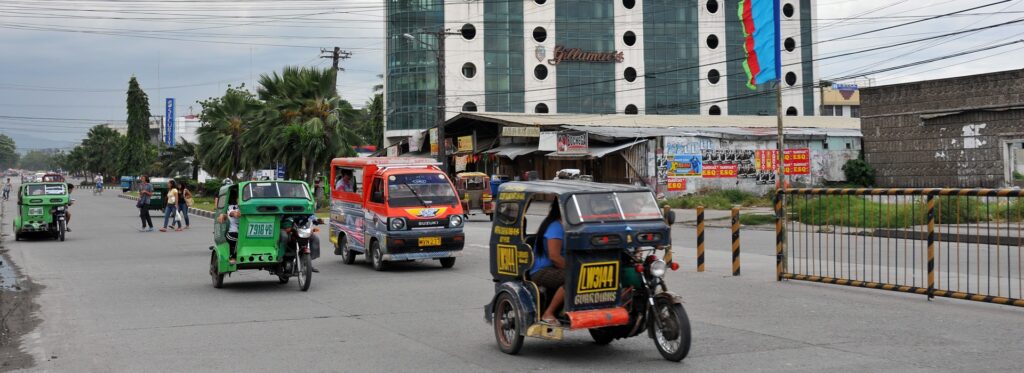General Santos is located at the heart of the Sarangani Bay. Or is the bay heart of Gensan. It would be fair to claim that without Sarangani Bay, there would be no Gensan. The bay is the bedrock of the city’s economy, providing unmatched opportunities for fishing, trade and tourism.
History of Sarangani Bay
Due to being a perfect natural harbor, the bay has been populated from the pre-colonial era. It is believed that the first inhabitants were members of the B’laan, T’boli and Sarangani Manobo tribes. The bay was also used by the Sangir people. It’s even believed that the name Sarangani comes from the Sangir word ‘saranganeng’ which roughly translates to ‘this is our stopover and place of sojourn’.
Sarangani Bay was an important maritime route for traders from Indonesia, Malaysia, and other Southeast Asian regions. It facilitated commerce and cultural exchanges between indigenous groups and foreign merchants.
During the Spanish era, the bay was part of the larger Cotabato region, which was a center for missionary activities and military expeditions. Later, under American rule, Sarangani Bay became a focal point for governance and land development, with efforts to integrate Mindanao into national economic programs.
In the early 1900s, the Moro Province was established. At those times Sarangani Bay played an important role in the migration of Christian settlers from Luzon and the Visayas. This migration shaped the demographic and economic landscape of the region.
In 1992, the Province of Sarangani was established, covering the complete coast of Sarangani Bay (except areas belonging to General Santos City), while in 2018, the bay was officially recognized as a protected seascape.
Economic importance of Sarangani Bay
Sarangani Bay is the bedrock of the economy not just for Gensan, but for the whole Sarangani province. Fishing, trade and tourism connected to the bay are major drivers of employment in the region.
Fishing
Sarangani Bay is rich with fish and sea animals, so fishing there was probably present since there were people living at the bay. This created a rich fishing tradition that is driving the economy to this day.
Importance and tradition of fishing has led to the development of several major fishing ports in the bay, the biggest of those being, of course, General Santos Fish Port Complex. Located at Barangay Tambler and spanning over 32 hectares, this is the major fish port of the region. It’s equipped with cold storage, processing plants, auction halls and berthing areas for large fishing vessels.
Other fish ports in Sarangani include Glan Municipal Fish Port at the east side of the bay and Malapatan and Maasim Local Ports at the west side of the bay. Those ports are generally used for catching smaller fish by local fishers using their bangka boats and are a vital part of local economies there.
In addition to that, the bay is home to Fish Cage and Aquaculture Farm Landings. Even though those are not ports, they are major suppliers of milkfish and shrimp.
Tuna is a major fishing product of Sarangani Bay. This gave Gensan the nickname Tuna Capital of the Philippines. Target tuna species are: skipjack tuna, yellowfin tuna, bigeye tuna, and albacore tuna.
Other fish gathered at Sarangani Bay include:
- Sardines
- Milkfish
- Hasa-hasa
- Alumahan
- Round Scad
- Anchovies
Tourism
Sarangani Bay has some of the most stunning beachlines in the world. Numerous resorts have naturally been established at the bay and serve as a backbone of the tourism in the region.
Notable resorts include:
- Dolores Tropicana Beach
- Lobo Beach
- London Beach Resort
- Watergran Resort
- BG Beach Resort
- Pacman Beach Resort
- Kawas Beach Resort
- AndreaMarie
- Asuncion Beach Resort
- Golden Beach Resort
- 7 Pirates Beach Resort
- Coco Beach Resort
- White Haven Beach Resort
In addition to usual resort activities, Sarangani Bay offers popular attractions such as snorkeling, cliff jumping and island hopping tours.
Balut Island and Sarangani Island are especially worth visiting, but get ready for a 6 to 8 hours boat ride to do so.
The bay has also become home to several festivals, which are attracting more visitors with every year. Most notable of those festivals are SarBay Fest and MunaTo Festival.
Trade
Thanks to the geography of the bay, Gensan is a perfect natural port which made our city one of the main trade hubs of the Philippines. Naturally, main export products are fish and sea products while main trade partners include Japan, USA and EU.
As for imports, most prevalent are raw materials, machinery, and consumer products.

